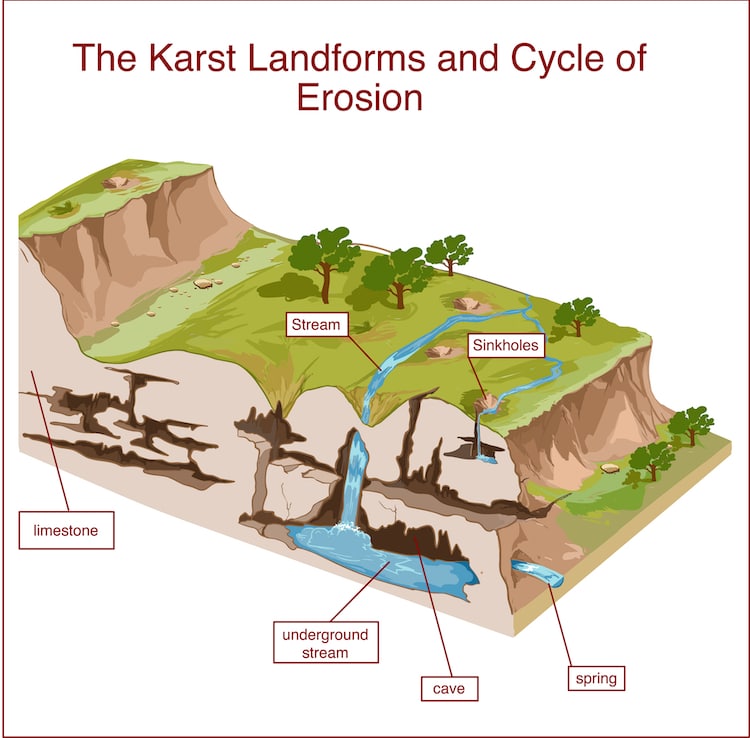What’s that? Oh, just a forest inside a sinkhole in China. pic.twitter.com/PvWpC38QGP
— Nine Dragons (@NineDragons2) May 12, 2022
Imagine finding an opening in the landscape and rappelling down more than 600 feet to see a thriving forest with shrubs up to your shoulders. It sounds like something out of a fantasy movie, but that’s exactly what recently happened to a group of Chinese speleologists. During a thrilling expedition in southern China’s Guangxi Zhuang Autonomous Region, the group explored a large sinkhole with multiple entrances. To their delight, there was a lush forest that was well established at the bottom of the sinkhole.
The team from the Institute of Karst Geology of China Geological Survey said that the 1,003-foot-long and 623-foot-deep sinkhole would be classified as “large.” This is just one of 30 giant sinkholes discovered in the county. In this instance, the team found ancient trees stretching up 131 feet, their branches leaning toward the sunlight that filters through the cave entrances.
So why do these giant sinkholes occur and why is China’s Leye county filled with them? To find answers, one needs to understand more about the area’s topography. This part of China is known for its karst landscape. Karst is created from the dissolution of bedrock and is known for caves and sinkholes. This is because as slightly acidic rainwater picks up carbon dioxide in soil, it becomes even more acidic and slowly erodes the bedrock. Over time, these cracks become tunnels and these tunnels can form caves or sinkholes when the terrain collapses.

Photo: corbacserdar.gmail.com/Depositphotos
Karst terrain is more common than you’d think, with 20% of the world’s landmass made from karst or pseudokarst. In the United States, for instance, 25% of the landscape falls into one of these two categories. But, due to differences in climate and geology, the landscapes’ outward appearance can differ greatly. These factors also influence the size of sinkholes, which can often be quite small.
But in southern China, there is the perfect recipe for giant sinkholes. In fact, Guangxi’s spectacular karst terrain is one of the main reasons that it, along with several other provinces, was designated a UNESCO World Heritage Site. As for this particular sinkhole, scientists are hopeful that they might even find some unknown plant species lurking in the forest.
In Mandarin, sinkholes are called tiankeng, which translates to “heavenly pit.” And certainly, by the looks of the photos, this new sinkhole certainly fits the description.
Scientists in China found a massive sinkhole with a lush forest growing at the bottom.
h/t: [Live Science]
Related Articles:
Pavilion Built for a King Sits Within Golden Cave in Thailand
Multicolored Stalagmites and Stalactites in China’s Famous Cave
This Beautiful Forest in the Sky Inspired the “Floating Mountains” in Avatar
Photographer Reveals the Crystal Clear Waters of Mexico’s Underwater Caves
